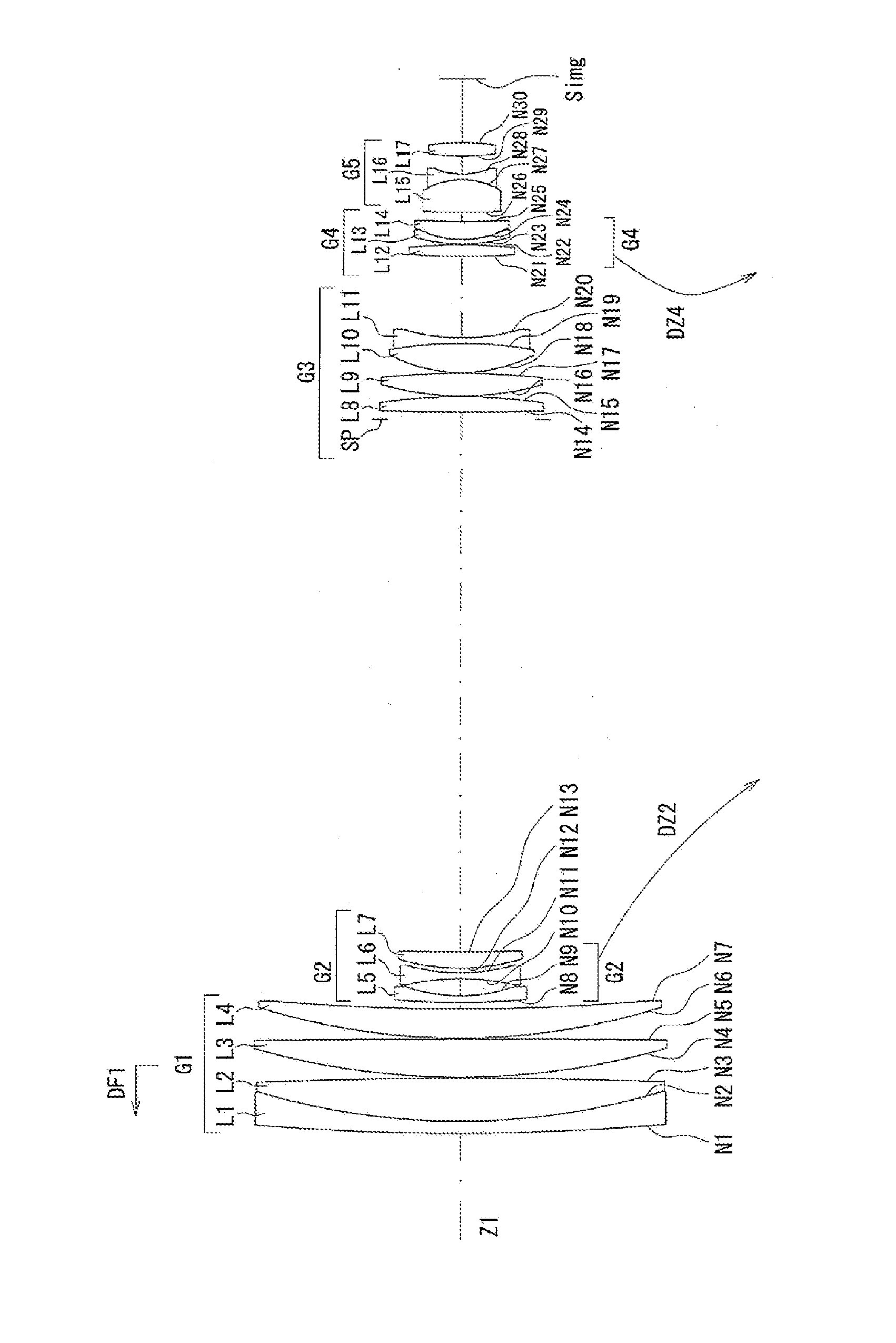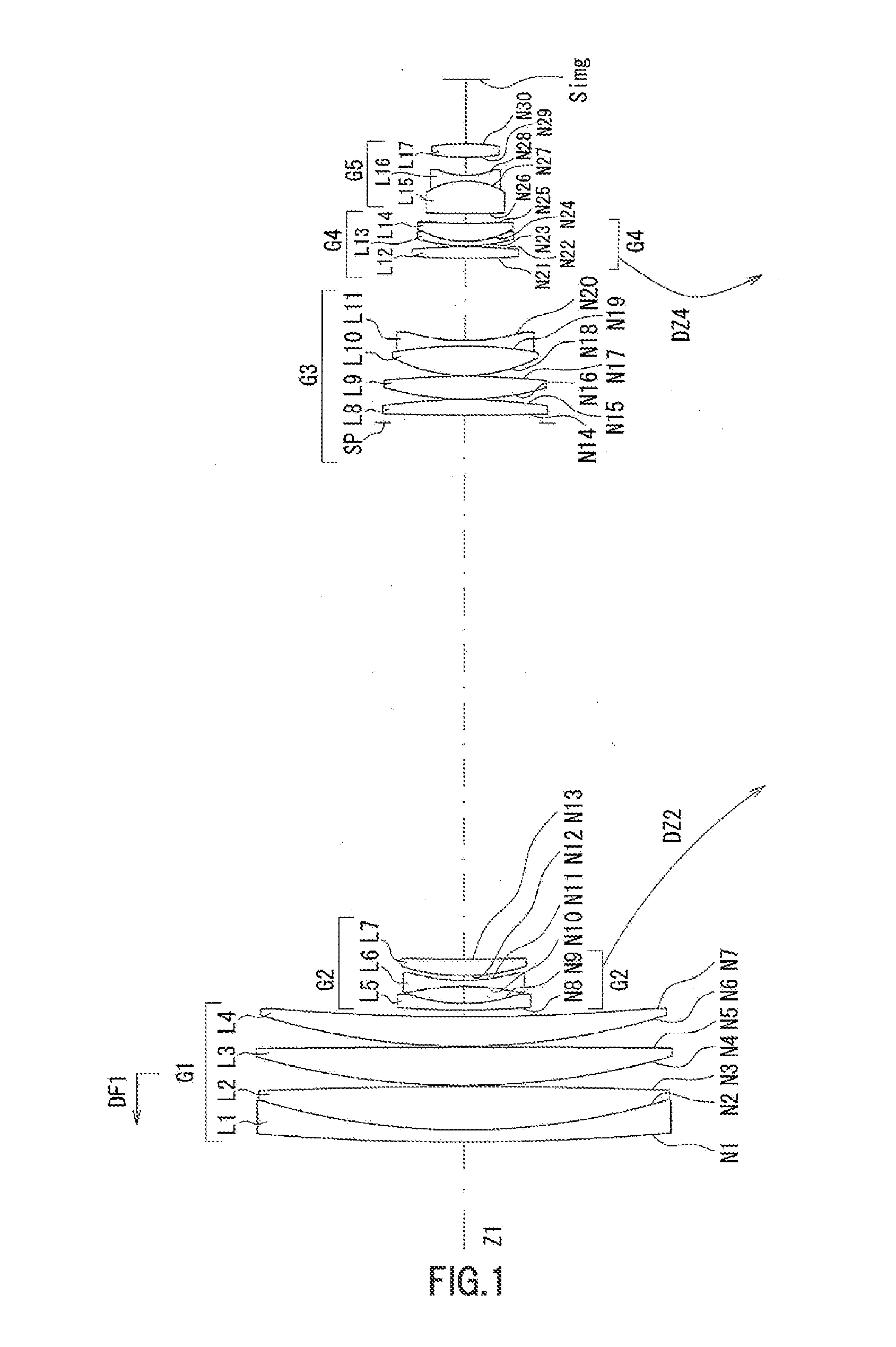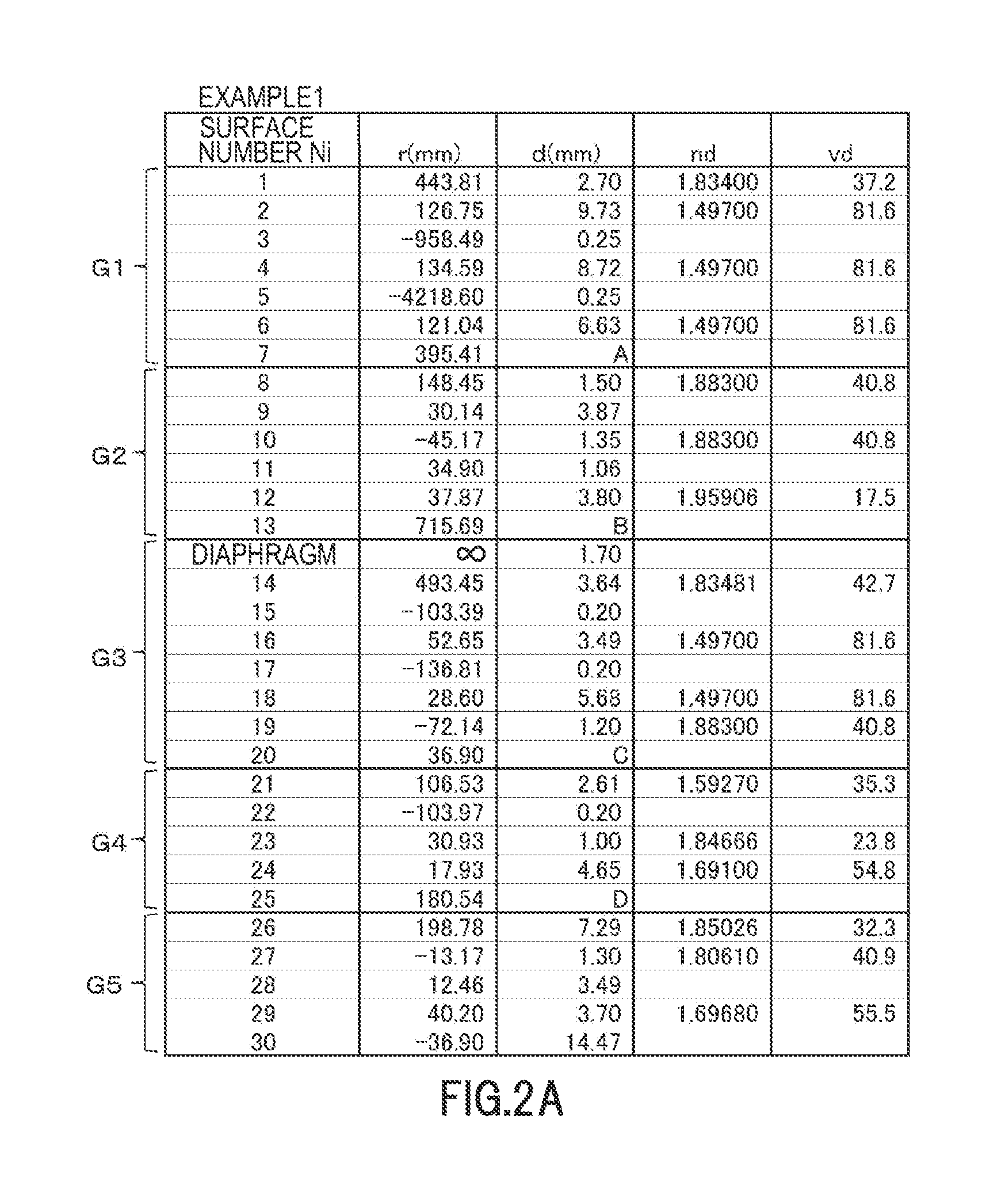Zoom lens
a zoom lens and zoom technology, applied in the field of zoom lenses, can solve the problems of small zoom lens size, large power of each lens group, difficult to correct aberration, etc., and achieve the effect of easy zooming of the zoom lens, high performance, and decreasing the telephoto ratio
- Summary
- Abstract
- Description
- Claims
- Application Information
AI Technical Summary
Benefits of technology
Problems solved by technology
Method used
Image
Examples
example 1
[0114]Example 1 will be described using FIG. 1 to FIG. 5.
[0115]FIG. 1 is a cross-sectional view showing the configuration of the zoom lens of example 1 at a wide angle end. FIG. 2A is a view showing parameters of each lens group of the zoom lens of example 1, FIG. 2B is a view showing each parameter of the zoom lens of example 1 at a wide angle end, in an intermediate area, and at a telephoto end, FIG. 2C is a view showing the value of each conditional formula of the zoom lens of example 1, FIG. 3A to FIG. 3C are longitudinal aberration diagrams at the wide angle end of the zoom lens of example 1, wherein FIG. 3A is a spherical aberration diagram, FIG. 3B is an astigmatism diagram and astigmatic field curves diagram, FIG. 3C is a distortion diagram, and FIG. 3D to FIG. 3G are lateral aberration diagrams at the wide angle end of the zoom lens of example 1, FIG. 3D is a lateral aberration diagram in a meridional (tangential) direction at a half angle of view of 24.19°, FIG. 3E is a la...
example 2
[0125]Example 2 will be described, using FIG. 6 to FIG. 10. Configurations of FIG. 6 to FIG. 10 are similar to the configurations of FIG. 1 to FIG. 5 of example 1.
[0126]As shown in FIG. 6, the zoom lens of example 2 has the following configuration.
[0127]The first lens group G1 consists of a cemented lens composed of an object side convex negative meniscus lens L1 and a double-sided positive lens L2, and an object side convex positive meniscus lens L3, sequentially from the object side.
[0128]The second lens group G2 consists of a double-sided concave negative lens L4, a double-sided concave negative lens L5, and an object side convex positive meniscus lens L6, sequentially from the object side.
[0129]The third lens group G3 includes a diaphragm SP, a double-sided convex positive lens L7, a double-sided convex positive lens L8, and a cemented lens composed of a double-sided convex positive lens L9 and a double-sided concave negative lens L10, sequentially from the object side.
[0130]The...
example 3
[0136]Example 3 will be described, using FIG. 11 to FIG. 15. The configurations of FIG. 11 to FIG. 15 are similar to the configurations of FIG. 1 to FIG. 5 of example 1. It should be noted that the line types for the wavelength of the light in the spherical aberration diagram of (a) and the lateral aberration diagrams of (d) to (g) in each of FIG. 23 to FIG. 25, are different from the line types in each of FIG. 3 to FIG. 5.
[0137]As shown in FIG. 11, the zoom lens of example 3 has the following configuration.
[0138]The first lens group G1 consists of a cemented lens composed of an object side convex negative meniscus lens L1 and a double-sided convex positive lens L2, and an object side convex positive meniscus lens L3, sequentially from the object side.
[0139]The second lens group G2 consists of an object side convex negative meniscus lens L4, a double-sided concave negative lens L5, and an object side convex positive meniscus lens L6, sequentially from the object side.
[0140]The third...
PUM
 Login to View More
Login to View More Abstract
Description
Claims
Application Information
 Login to View More
Login to View More - R&D
- Intellectual Property
- Life Sciences
- Materials
- Tech Scout
- Unparalleled Data Quality
- Higher Quality Content
- 60% Fewer Hallucinations
Browse by: Latest US Patents, China's latest patents, Technical Efficacy Thesaurus, Application Domain, Technology Topic, Popular Technical Reports.
© 2025 PatSnap. All rights reserved.Legal|Privacy policy|Modern Slavery Act Transparency Statement|Sitemap|About US| Contact US: help@patsnap.com



